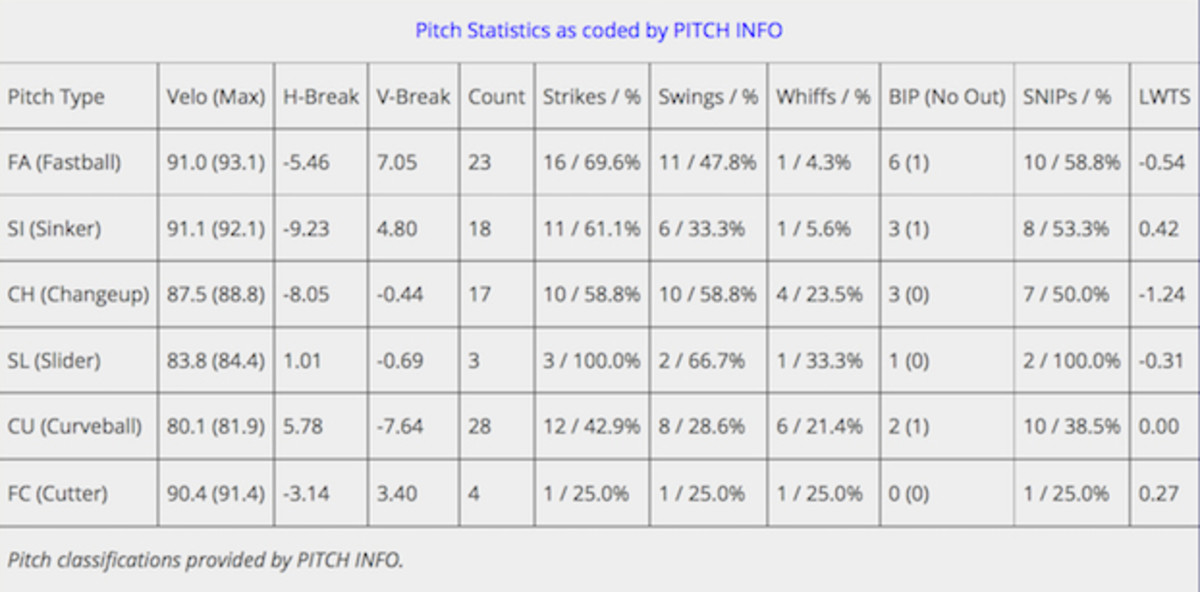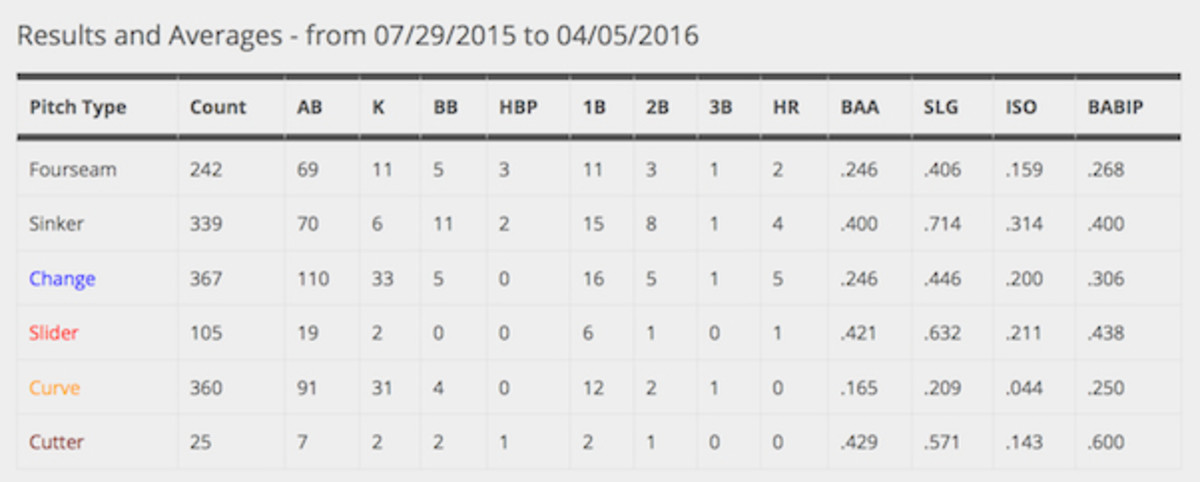Why Felix Hernandez’s curveball continues to be so effective

By every measure, Felix Hernandez had one of the worst seasons of his career last year. To be fair, “worst” is a relative term in this context. Many pitchers would love to have a season like Hernandez’s in 2015, but there’s a reason we call Hernandez the king.
Still, there was plenty of reason to be concerned about Hernandez coming into this season. He posted his worst ERA (3.53) since 2007. His FIP (3.72) hadn’t been that high in seven years. His strikeout rate (23.1%) and WHIP (1.18) were both the worst he’d posted since 2011, while his K/9 reached a new five-year low.
Fantasy baseball Waiver Wire: Undrafted players who’d be good adds
But perhaps the worst sign was that Hernandez’s average fastball velocity registered just 89.7 mph, by far the lowest of his career. Those were all alarming signs for a player about to start his age-30 season who had already racked up more than 2,200 innings in his career.
Hernandez made his eighth straight Opening Day start for Seattle—and ninth overall—on Monday, and the results were good, but not great. Yes, Hernandez allowed just one earned run and one hit in six innings in a 3–2 loss to the Rangers, but he walked five batters, setting up his own demise, though things wouldn’t have been so ugly without Kyle Seager’s error.
Hernandez’s pitch log from the loss revealed a rather interesting nugget that might actually be a trend. Take a look at the following table, courtesy of Brooks Baseball, paying particular attention to the “count” column.

Hernandez threw his curveball 28 times—more than any other pitch—on Opening Day. That marked just the sixth time in his 335 career starts that he threw his curveball more than any of his other offerings. That in itself may not seem all that noteworthy, but keep in mind that five of those six starts have occurred since July 29 of last season.
Bold predictions: Top pitchers, hitting busts, award winners and more
In other words, the curveball was Hernandez’s favored pitch just one outing in the first 323 starts of his career, but it has been his most frequent offering in five of his last 12 trips to the mound. This can’t simply be an anomaly, or even a matchup-based trend. This looks more like a pitcher coming to grips with his diminished velocity, and making the necessary changes to remain at his most effective. There’s plenty of evidence that Hernandez’s increased emphasis on the curveball is paying dividends.
Let’s start in the most obvious place. Going back to the first of Hernandez’s curveball-heavy starts since last July, hitters have not had any success against the pitch. Hernandez has limited the opposition to a .165 batting average, .209 slugging percentage and .044 ISO on the pitch since seemingly becoming a curveball-first starter. Compare that to what hitters were able to do against every other pitch in his repertoire.

When you see those numbers, it’s no surprise that Hernandez has favored his curveball over his last 12 starts. In that timeframe, it has been far and away his most effective pitch. Hernandez has amassed a 15.3% whiff rate and 66.7% ground-ball rate with the curve since July 29 of last year. Rarely are hitters putting the pitch in play, and when they do, it almost always rolls into an infielder’s glove.
Hernandez has also attacked both righties and lefties with the curve. Over these last 12 starts, he has thrown it 158 times against righties, and 202 times with a lefty at the plate. He has been a bit better with the platoon advantage, as should be expected, but hitters haven’t had much success from either side of the plate.
Let’s take a look at a couple of the 28 curveballs Hernandez threw on Monday, one to a hitter on either side of the plate. The first is to lefty Mitch Moreland. It’s an 0–2 count, so Hernandez is in the driver’s seat. He has the freedom to bury the ball in the dirt, and that’s exactly what he does. Moreland can’t help himself, and swings helplessly over the top for strike three.
A lot of this is driven by context. Hernandez has a defenseless hitter at the plate who’s desperately trying to put the ball in play in an RBI situation. What’s important, however, is that Hernandez has the confidence in the curve to go to it as a put-away pitch in an obvious fastball count. Pitching 101 says you go higher than high with a fastball regularly in an 0–2 count, changing a hitter’s eye level to set him up for a breaking ball. Hernandez doesn’t bother with that waste pitch, and gets right to ending the Rangers’ budding scoring threat.
The second curve is essentially at the opposite end of the context spectrum. This one comes with a righty, Adrian Beltre, at the plate. Rather than an 0–2 count with two men on and two out, this is the first pitch of the inning. These two veterans know each other well. After Monday’s game, Beltre is 11-for-48 with nine strikeouts in 55 career plate appearances against Hernandez. It stands to reason that he has seen everything Hernandez has to offer, in every single count, a few times over, including a first-pitch curveball like the one in the GIF below.
Now, to be fair, most hitters aren’t going to offer at a curveball on the first pitch of an at-bat, unless they’re guessing curve or it’s a significant mistake up in the zone. Still, Beltre’s reaction suggests he was a bit surprised by the offering.
Only time will tell whether or not Hernandez can remain a top-15 pitcher with a fastball that sits at 90 mph by relying heavily on his curveball. It has undeniably been a great pitch for him, but hitters will start to adjust to what has become an identifiable trend. What we do know, however, is that Hernandez has made the seemingly necessary adjustment to still get the most out of his pitch repertoire. That bodes well for a pitcher who entered 2016 with less fanfare that at any other time of his career.
